Table of Contents
- The Sefer Kielce (Book of Kielce)
- The Kielce Synagogue
- Personal History
- Finding his family in Kielce
- The Kielce Ghetto
- Following The Footsteps of Kielce Jews
- The Martyrdom and Extermination of the Jews in Kielce During WW II (2005)
- Historical Perspectives & Eyewitness Accounts
- Regarding Poland’s Kielce Pogrom
The Sefer Kielce
The Sefer Kielce (Book of Kielce) provides a comprehensive history of the Jewish Community of Kielce, from its founding until its destruction. This book also includes portraits of some of the leaders, as well as, some of the central characters of the community, testimony, sketches and excerpts from diaries. There is also a chapter related to the pogrom in Kielce on July, 4, 1946.
Read the original Hebrew/Yiddish publication of the monumental Sefer Kielce courtesy of the New York Public Library. Toldot Kehilat Kielce. Miyom Hivsuduh V’ad Churbanah. (Book of Kielce. History of the Community of Kielce. From Its Founding Until Its Destruction) Edited by: Pinchas Cytron, Tel Aviv, 1957.
Prior to the German occupation, the Jewish population was approximately 25,000 Jews lived in Kielce (approx. one-third of the Kielce population). Upon liberation, only 200 Jews returned to Kielce. An estimated 85% of the Jews of Poland were killed under Nazi occupation, in Kielce, the percentage of Jews killed was considerably higher ((98%). One can read a comprehensive, yet brief history of the Jews of Kielce (from the YIVO Encyclopedia of Jews in Eastern Europe) up until and including the pogrom in Kielce (July 4,1946).
The Kielce Synagogue
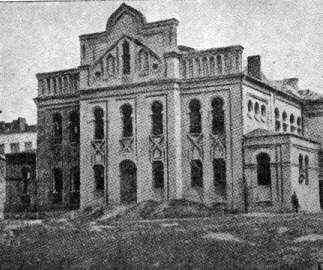
The Kielce Synagogue and a 3 dimensional computer graphic reconstruction
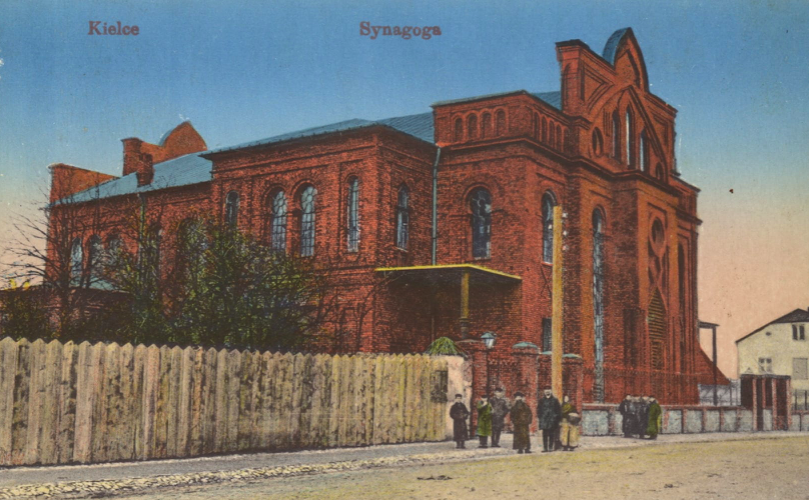
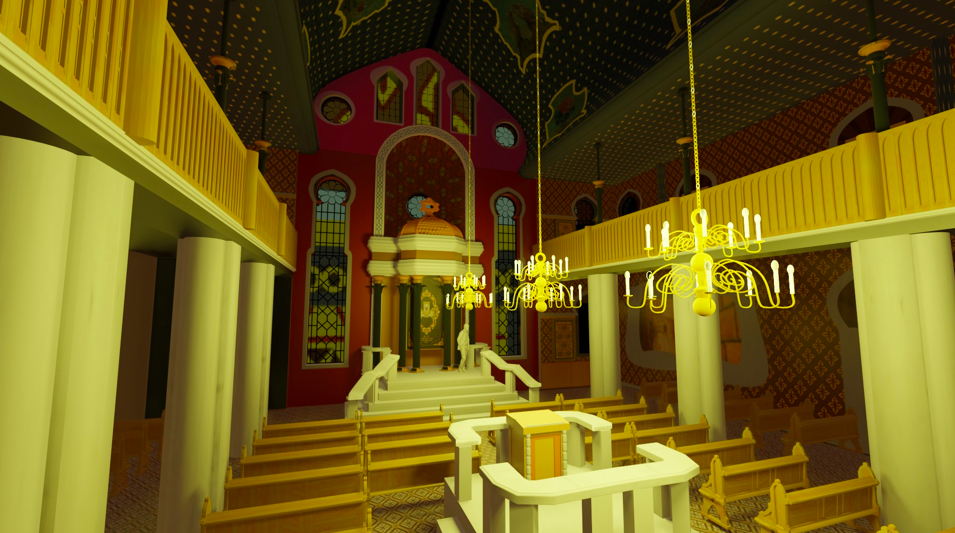
- Imagine you are sitting up in the woman’s gallery of the Kielce Synagogue in pre-war Kielce. Is this how the main hall of the synagogue in Kielce looked like from the women’s gallery?
https://www.facebook.com/stowarzyszeniejanakarskiego/photos/4519485618094960
(To view from various perspectives, move the cursor over the photo image).
- Excellent depiction and explanation of the history of the Kielce synagogue, along with an explanation of associated traditions!
- After the war, the Kielce Synagogue served as a government archive. This video was produced by the Jan Karski Society (Stowarzyszenie im. Jana Karskiego) as part of a project co-financed by the Association of the Jewish Historical Institute of Poland.
After the war, the Kielce Synagogue served as a government archive. This video was produced by the Jan Karski Society (Stowarzyszenie im. Jana Karskiego) as part of a project co-financed by the Association of the Jewish Historical Institute of Poland. http://www.dom-kielce-planty7.pl/synagoga/
Text pertaining to the history is in Polish. To interact with the 3d model, click on Model 3d or click on
https://app.lapentor.com/sphere/synagoga
By clicking on the various icons and bars and moving the cursor over the photograph, you will be able to explore the synagogue from every room and perspective.
Interesting photo of the Mikve (a place for the Jewish religious custom of cleansing by water of ritual impurity) that was once next to the synagogue in Kiece. On the right we can see the edge of the synagogue and the entrance stairs. This building was demolished in the 1970’s to allow for construction of a 2 lane avenue.
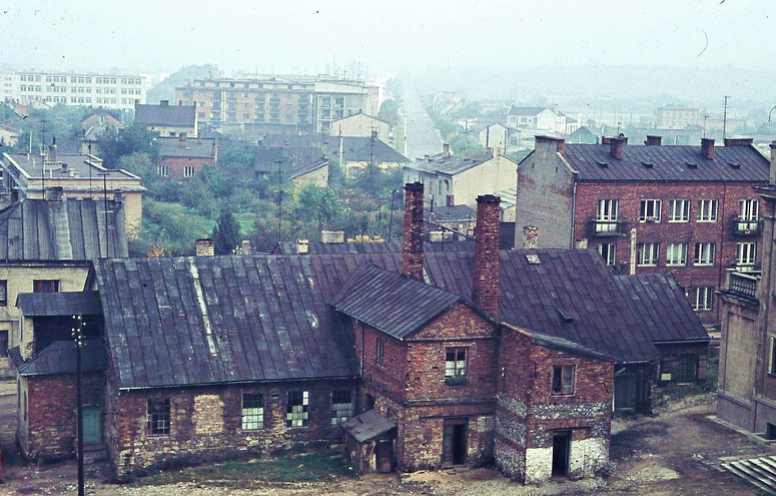
Anti-Semitism in Poland and the Kielce pogrom
Anti-Semitism in Poland and the Kielce pogrom cannot be fully understood without a critical examination of the strong tradition of anti-Semitism that existed in Poland prior to Nazi occupation and did not diminish in the immediate years following the Holocaust.
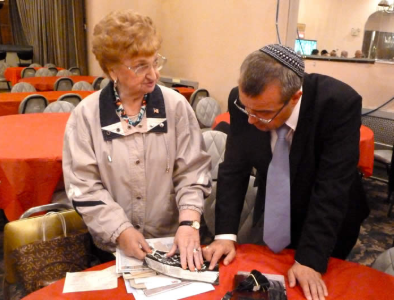
Personal History
You can submit information on family members who were killed during the Nazi occupation or the immediate aftermath, as well as gain information that has been previously submitted to Yad Vashem. Here are some suggestions for finding your family history from Kielce.
Finding his family in Kielce
Manny Bekier’s father passed away in 1971. As the only survivor of the Holocaust in his family, the family history and experiences under German occupation that he silently carried, was buried with him. Like most survivors, it was too painful to share family experiences under occupation with his children.
In his desire to learn about his father’s family, Manny visited the Jewish Historical Institute in Warsaw and was able to find a deposition his father gave shortly after liberation. The attached deposition (translated into English), History of the Jewish Community during the occupation 1939 – 1945 reveals a startling and harrowing eyewitness account of life in the Jewish community of Kielce under German occupation.
The Sefer Kielce & The History of Jewish Kielce

The German army entered the city of Kielce on Sept. 4, 1939, and the Jews were singled out for persecution. During early 1940 about 3,000 Jews from Cracow, Lodz and Lalisz were deported to Kielce, increasing the Jewish population to about 28,000. The Jewish population reached an unsustainable level with the arrival of 7,500 Jews deported from Vienna. On March 31, 1941, a decree was issued to establish a ghetto. On the eve of Passover the ghetto was sealed off from the rest of Kielce and the outside world.
The Kielce Ghetto
A Judenrat was appointed, chaired by Moshe Pelc, who bravely attempted to look out for the best interests of the ghetto. He was eventually arrested and deported to Auschwitz for resisting German orders. His place was filled by Herman Lewi, who tended act as a puppet and complied readily with the Germans. The conditions of the population in the ghetto grew steadily worse. About 4,000 people died during a typhus epidemic in 1941. In the course of three days (Aug. 20–24, 1942), about 21,000 Jews were deported to Treblinka and exterminated. Many Jews resisted being taken and were murdered in their homes and in the streets. Most of the victims were the elderly, the ill, and many children were caught and murdered on the spot trying to run and hide wherever they could.
The ghetto was virtually liquidated. The remaining 2,000 Jews were concentrated in a newly established slave labor camp. Preparations in the camp for an armed rising, conducted by an underground organization headed by David Barwiner and Gershon Levkowicz, did not succeed. In 1943 a number of deportations from the labor camp took place. Approximately 1,000 people were deported to slave labor camps in Skarzysko-Kamienna, Blizyna, and Pionki, where only a handful survived. The last deportation took place in August 1944, when all the remaining Jewish prisoners were sent to Auschwitz and Buchenwald.
Additional information is available here on the Kielce Ghetto (March 31,1941), and the deportations to Treblinka.
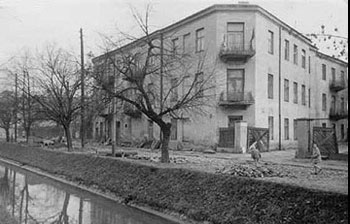
Postwar Period
After the war about 200 Jewish former residents returned to Kielce; some were survivors of Nazi camps, or had hidden in the countryside, and others had come back from the interior of the U.S.S.R. Their reconstruction of the former organized Jewish community, centered at 7 – 9 Planty, aroused anger among the many citizens of Kielce. The growing hatred, sparked by a blood libel accusation when a young boy was reported missing (the Jews allegedly kidnapped Polish children, in order to drain their blood, and kept them in their apartment building basement) culminated in an armed day-long pogrom against the Jews. 42 Jews (the official count) at the site on Plany street were murdered, including children and pregnant women, and around 100 were injured. Jews were also murdered in other parts of Kielce (in particular the train station, where Jews were thrown off the trains and beaten to death.
The pogrom gave impetus to the Jews in Kielce and to the other Jewish survivors of the Holocaust to leave Poland en masse for the West. They reached the displaced persons camps under allied administration. Many Jews from Kielce joined the Bricḥa (flight), in order to reach Palestine.
Following The Footsteps of Kielce Jews
An historical review of what remains of the Jewish community in Kielce today and the monuments of a once thriving Jewish community.
The Martyrdom and Extermination of the Jews in Kielce During WW II (2005)
In February 1945 there were approximately only 200 Jews from Kielce, who managed to survive The Holocaust. Professor Krzysztof Urbanski has painstaking written a highly detailed and comprehensively researched book which you can download here:
This translation of The Martyrdom and Extermination of the Jews in Kielce During World War II was published through the generous support of Mr. Yaacov Kotlicki, in memory of his family who lived in Kielce and was murdered in the Holocaust, and in memory and honor of his parents.
Historical Perspectives & Eyewitness Accounts
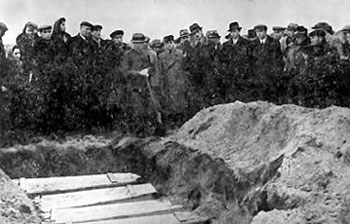
1. A Kielce Memoir by Moshe-Mayer Baum
There has been very little written by Jewish survivors who personally witnessed the deportations of the Kielce Jewish community (August 20-24, 1942). This is a very powerful memoir and it offers a frightening glimpse of the deportations to Treblinka (beginning on page 65) and the authors’ daily struggles of hiding and survival in the Polish countryside.
Moshe Mayer Baum began to faithfully record his experiences and observations under the German occupation of Poland, in Yiddish and in Polish, while in hiding in the Kielce region of Poland in the years 1943 through the summer of 1944. The memoir, Moszek Baum, WE DON’T KNOW WHAT THE NEXT HOUR WILL BRING US – Journal written in hiding in the years 1943-1944 has been translated into Polish, edited by Professor Barbara Engelking, and has been published in Warsaw by The Center for Research on The Holocaust in 2020.
In the years shortly before Moshe Mayer Baum passed away, he painstakingly recalled and recorded all his experiences in Yiddish. In this memoir, Manny Bekier worked on the English translation, trying to ensure that the content was contextually accurate, made sense, and faithfully reflected the authors’ meaning and sentiments.
Please note that A Kielce Memoir is 210 pages and the download may be slow.
2. Excerpt From the writings of Raphael Blumenfeld
A Jewish survivor from Kielce, also an eyewitness to the pogrom and the hatred leading up to it.
This city is known in infamy for the depth of its hatred for Jews throughout the generations. In the annals of Poland it is regarded as a holy Catholic city in which, until the Polish revolt in 1863, it was forbidden for Jews to settle and reside in the town. Jews were able to enter the city during the day for purposes of trade and economic activity, but it was forbidden for them to stay overnight in this “holy” city lest they contaminate its holiness. The Jews consequently were concentrated in the small towns around the city like Hentzin or Hamailnik in which glorious Jewish communities existed going back to medieval times.
From the year 1863, after the failure of the Poles’ revolt against the Russian Czarist rule, Jews from the small towns around began to establish a place for themselves in terms both of residence in the city and of building a communal life in Kielce. The community developed quickly and contributed much to the city’s economic and industrial life by developing the quarries and the natural resources in the town’s vicinity as well as small industry such as shoe and leather manufacturing. The Jews were among the pioneers of industrialization and craftsmanship in the city, but all this did not discourage the Poles from victimizing them whenever possible.
The influence of the anti-Semitic national party, N.D., upon the Polish inhabitants of Kielce was decisive, as its leaders in the city occupied various positions in the Catholic clergy. So long as the Russian oppression remained intact, they had to be satisfied with anti-Jewish propaganda and with occasional acts causing disturbance to Jews on their own holidays, in particular on their Easter festival. But with the end of World War I, upon receiving independence after a century-and-a-half of Russian rule, the anti-Semitic Poles on this city immediately demonstrated their power against the despised Jews as they initiated a murderous pogrom on November 11, 1918, on the very day on which they won their independence. In this pogrom more than ten Jews were killed and several hundred were wounded, and the damages in the wake of the booty and plunder of Jewish property accompanying the pogrom could be measured in millions of zloti.
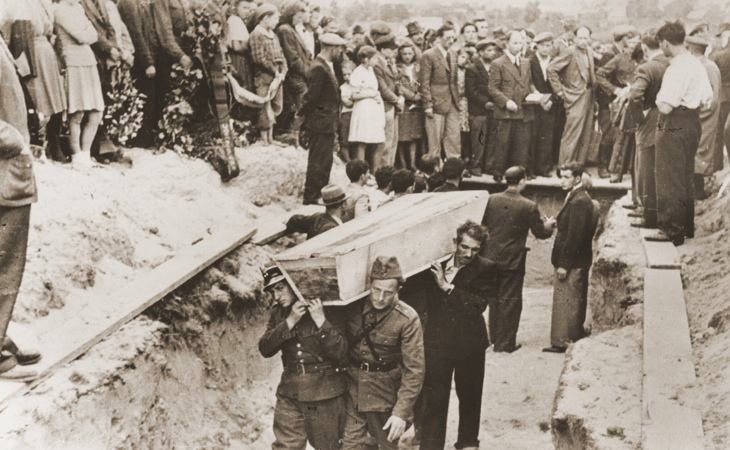
This pogrom was engraved as an abomination in the memory of the Jewish population of Kielce. But even with all these incidents, the Jewish community in the city increased and surmounted all the difficulties and the pogroms which Poles tried once again to foment against the Jews of Kielce during the 1930’s. They would cause damage to Jewish stores and trade by throwing stink bombs and placing groups of Polish students near Jewish stores, all this with the encouragement of the authorities. Additional encouragement was provided by the Polish prime-minister, General Skladkibski, who in his speech in the Polish parliament announced that “actions threatening the lives of Jews are forbidden, but economic destruction uvsham (quite the contrary).”
3. Kielce
Translated by Mark Froimowitz
In this emotionally charged narration, the writer relates the Jewish characteristic of Kielce and how it was erased by the Nazis and completed after the war by the Poles of Kielce.
– M. Bekier
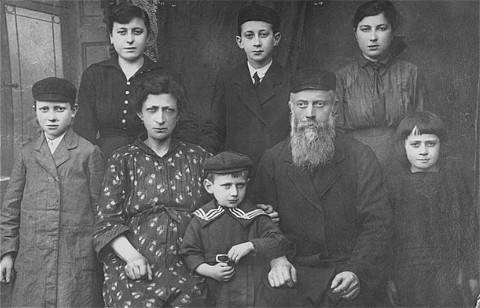
Kielce was a large Jewish center where, before the war, there lived 22,000 Jews. But the economic and cultural position that Jews occupied here far exceeded their number. The picture of Kielce was Jewish. The long street beginning at the railroad station and running till far past the city center and all of the cross streets were thickly settled with Jews and occupied by Jewish stores. The signs over the stores, the houses themselves, the people on the streets – Jews and Jewishness. Though the pre-war Polish powers compelled the Jewish manufacturers to remove Jewish workers and to replace them with Polish ones, the Kielce industries remained Jewish and Kielce was dominated by the Jewish family Zagiski, the owner of the large lime kilns that supplied lime for all of Poland.
Kielce did not have those deep traditions of the old Jewish cities like Lublin or Krakow. She was the youngest Jewish community in Poland. Until the Polish “rebellion” in the year 1863, there was not a single Jew in Kielce. After the removal of the prohibition for Jews to live there, Jewish life was established in the course of a short time, which from that time on, increased continuously until the great catastrophe of 1939.
Because of her youth, Kielce did not have famous Yeshivas and Talmud Torahs. Here, Jewish life developed more under the influence of trends toward Polish culture. Later on, the Jewish secular culture did not hold back its great ambitions. However, Kielce was a city with a Jewish heart. As the Jews in Warsaw and other cities, the Kielce Jews had the same readiness to sacrifice, the same tie to Jewish qualities and ways. On the other hand, the wallets of Kielce Jews were more open than in other cities. As if they wanted with charity and generosity to atone for their lack of a Torah tradition.
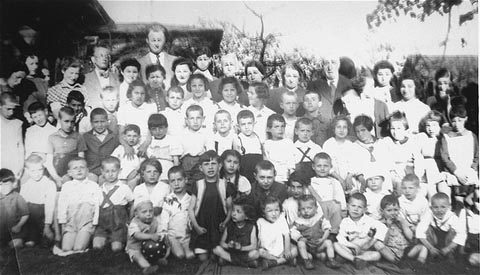
Among the Kielce Jewish citizens, the largest influence was Zionism. But other Jewish political parties also had an honest share here. And just as in the other cities, the Kielce Jews believed that they were building an eternal place, and in that eternal place would play out all Jewish salvation. They believed, through their hard work, they could build a Jewish state in the land of Israel, as well as, shape the socialist revolution in Kielce. They would free themselves and others.
Now I have come to Kielce and discovered all that the Jews here have created. But of the Jews themselves, I found only a few. Literally, only a few Jews. I did not find them in their homes, but only accidentally, the way that one meets people in a bus depot.
It was, beginning in 1940, when in Kielce there were 28,000 Jews. After the take over of Poland by the Germans, the Jewish wandering began. Better said, the Jewish running. Several thousands Jews fled Kielce. They were running to the Soviet side, toward Lemberg. Later, many of them came back in order “to die in their own bed”. Jews also came from nearby towns. Two thousand Jews came from Lodz and from the Lodz province. On the eve of Passover 1941, 28,000 Jews were locked in the ghetto. Compared with other cities, the Kielce ghetto was large enough. The local Polish leaders asked the Germans to designate a large ghetto since overcrowding causes the outbreak of epidemics from which everyone suffers, including the Polish population. The Germans accommodated the request of the Polish city fathers. However, they later realized that what the Polish leaders want is against the politics of the Germans. They, the Germans, need epidemics and the largest possible gas chambers. They cut Warsaw street off from the ghetto and the crowding made epidemics a natural annihilation.
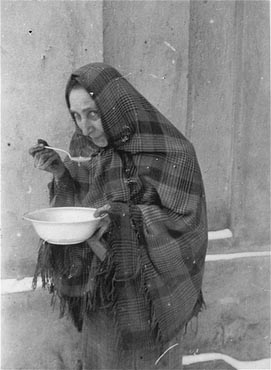
In the ghetto, however, a much worse epidemic broke out, degeneracy. An assimilated Jew, Herman Levi informs on the president of the Jewish Council, Dr. Moshe Pelz, who did all things possible to lighten the lives of the Jews in the ghetto, that he was working against the German power. Dr. Pelz was sent to Oswiecim (Auschwitz) where he died in the gas chamber. Herman Levy then took over the leadership of the Jewish Council. Nevertheless, Levy, after his betrayal, was sent to the Oswiecim gas chambers in November 1942.
The youth in the ghetto prepared an underground movement. However, the same dark process repeated itself as in all other Polish cities. Against the Jews were not only the Germans. The Jews were completely alone. The Polish organizations received help from abroad. They had weapons, but they refused contact with Jews. The ghetto existed without any hope of any help from the outside world.
The 20th August 1942 began the end of all hope in the ghetto. The German “Zondercommando” with the Ukrainian, Lithuanian, and Polish helpers took over the ghetto, and within several days, they liquidate the Kielce Jewish community. On average, six thousand Jews a day were deported. The command was to kill more Jews on the spot. In the time of the “resettlement”, the streets, the houses, and the bunkers were bathed with Jewish blood. Thousands of dead Jews were scattered in the streets. A wild slaughter went on for a week. Every second day, approximately 6000 Jews were rounded up – on the 20th, the 22nd and the 24th of August. At the end, there remained not more than 2,100 Jews in the ghetto. Among them, 45 children from the Jewish police, the doctors, and the Jewish Council.
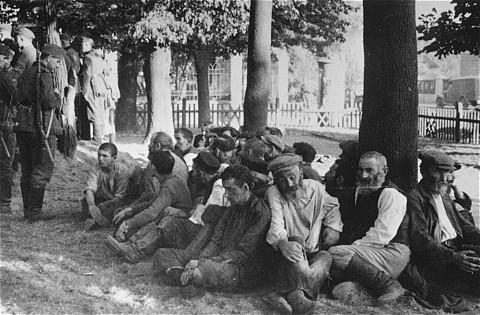
After the final transport and on site executions, 1500 Jews were confined to the Kielce work camp [translator’s note: There was a Hasag slave labor camp in Kielce]. With their own hands, the German murderers gathered together the plunder. Here the Jews would live until their work ended. Left were only the young and strong. They now began to prepare themselves intensively for a revolt. The organizers were David Bachwiener, Gershon Leftkowich and the younger Chmielevski. They were able to manufacture weapons by themselves . David Bachwiener made grenades. Unfortunately, a provocateur, Yahan Spiegel, the chief of the Jewish police, infiltrated the movement. Yahan Spiegel believed that, by betraying the organization, he would win life for himself and his family. He betrayed the organization to the Gestapo and all were executed. Later when the Germans liquidated the work camp, they send Spiegel to Oswiecim. There he was killed by two religious Jewish boys, the brothers Shlomo and Yehuda Perl from Kielce.
The Jewish community of Kielce no longer existed. After the war, a few Kielce Jews who saved themselves in Russia returned. The remainder survived the German camps. 400 Kielce Jews came home and wanted to start anew, as was done 80 years ago. But, the Polish population was reluctant to allow Jews to return to Kielce. The triumph of the German murder of the Jews was also their triumph and they would not allow it to be pulled from their hands. This culminated in a pogrom against Jews in 1946.
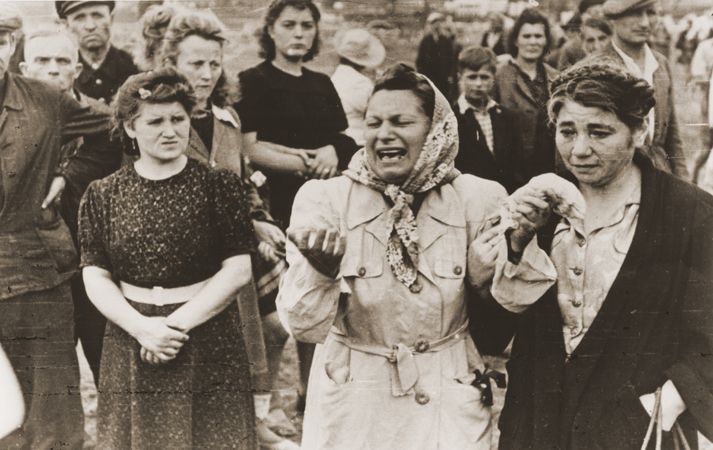
The current representative of the Jews in Kielce, Isadore Cohen led me to the house where most of the victims fell. He told me that the tactics of the Poles were well thought out, as the pogrom was planned out before hand. The pogrom was carried out through the unified power of all of the Polish strata. They killed the Jews leisurely in cold blood, as they were sure that no one would interfere with their work. Hoodlums from their security forces also participated in the pogrom.
The central power liquidated the pogrom. About ten pogrom perpetrators were shot. And even several officers of the security forces were punished for their “slow interventions” at the time of the pogrom. However, the father of the pogrom, Bishop Hlond remained in Kielce.
As a result, Jews made every effort to leave Kielce and Poland. They have had enough, of Kielce and this land, as all that was dearest was forever crushed and destroyed.
Approximately 20 Jews remained in Kielce. Jews that certainly could not be recognized as Jews on the street. Where did these Jews live? No one knew. When I came to Kielce, a policeman on the street informed me that, if I was looking for Jews, they must live near the security forces, because they were afraid to live just anywhere in the city. And indeed, in a house near the police station, I found three apartments where Jews lived. In the small rooms were a bed with the table and oven together. There, in the evening, I had a meeting with the whole Jewish population of Kielce. I was not able to determine what held this score of Jews here. From one woman, I heard that she was there temporarily.
She was battling a Polish woman about her sister’s child whom the Polish woman would not return. Several boys occupied themselves with selling Jewish houses. One young man declared to me that, in any case, the Jews have lost the war, so what difference does it make how one’s few years end. Sitting here were a score of Jews, as in a train station. But these “passengers” were homeless as to where to go.
Characteristic of the Kielce Poles after the war, was to destroy what the Germans had not yet destroyed. The Germans had desecrated the Kielce cemetery. They had made it into an execution place. They had torn down parts of the fence with Jewish gravestones. After the German retreat, Polish hooligans took to the fence, and in the course of several days, completely wrecked it. Now the Jews had to build a new fence and erect a memorial for the murdered Jews during the German occupation and the pogrom.
The large beautiful synagogue that once existed, was converted by the Germans to a warehouse in which was found the bedding of the Jews after the “resettlement”. The entire huge building was filled with Jewish pillows and comforters. After liberation, the synagogue was converted by the Poles to a toilet for peasants who came to the large synagogue plaza with their wagons on market day. When I, with Isadore Cohen, went together to look at the synagogue, we found there a group of Polish schoolchildren who amused themselves by throwing stones at the remaining panes of glass in the windows.
The second synagogue in Kielce – Zagiski’s synagogue – was converted to an iron warehouse.
All that happened in Kielce after liberation was a concerted effort to remove every trace of Jewish life in Kielce. The pogrom in Kielce was a continuation of the liquidation of the remainder of the once large Jewish community. Approximately 500 Jews returned to Kielce and the murderers attempted to destroy the surviving remnant. With that ended the history of Jewish existence in that city.
4. A retrospective on The Kielce Pogrom
View the 1946 Polish newsreel of the pogrom in Kielce,
SWIADKOWIE [WITNESSES] a documentary film made in 1988 by Marcel Lozinski, revealed the views of the inhabitants of Kielce, participants, as well as witnesses of the Kielce pogrom of 1946. Reviewed by Manny Bekier.

5. Poland Marks 60th Anniversary of Massacre
By VANESSA GERA
The Associated Press
Tuesday, July 4, 2006; 7:34 PM
KIELCE, Poland — Sirens wailed and a rabbi led prayers in a Jewish cemetery Tuesday while Poland unveiled a monument to dozens killed by angry mobs in a rampage 60 years ago known as Europe’s last pogrom.
President Lech Kaczynski marked the anniversary of the Kielce massacre, which left 42 people dead, by declaring in a statement that in Poland there is “no room for racism and anti-Semitism.”
Poland’s chief rabbi, Michael Schudrich, led the Hebrew prayers little more than a month after he was attacked, though not injured, by a man linked to neo-Nazi groups who punched him the chest and sprayed him with pepper spray.
Police arrested the attacker last week, and the rabbi praised the president’s stance. “He said exactly what he needed to say, that there is no place in Poland for anti-Semitism,” Schudrich said.
The anniversary comes at a sensitive time politically for Poland _ two months after the governing Law and Justice party formed a coalition with two small parties, including the League of Polish Families, a right-wing group rooted in a prewar anti-Semitic party.
That coalition deal sparked concerns within Poland’s Jewish community that the new conservative government could encourage anti-Semitism, and the European Union also has criticized Poland for an alleged rise in intolerance.
“As the president of Poland, I want to say it loud and clear: what happened in Kielce 60 years ago was a crime,” the president said in his statement. “This is a great shame and tragedy for the Poles and the Jews, so few of whom survived Hitler’s Holocaust.”
An aide read Kaczynski’s remarks at the monument’s unveiling, saying the president was ill and could not attend.
Kaczynski said Poland today puts a high priority on good relations with Jews and Israel. In a sharply worded passage, though, he said Poles should not be called anti-Jewish and said he “deplored” statements intended “to strengthen the stereotype of the Polish anti-Semite.”
“We have numerous examples of Poles risking their lives in an attempt to save their Jewish fellow citizens from Nazi annihilation,” Kaczynski said.
The massacre in Kielce came on July 4, 1946, when townspeople and police attacked the Jews of Kielce with guns and clubs little more than a year after the defeat of Nazi Germany.
The mob killed 42 people, mostly Jews, while about 30 more also were killed in a violent frenzy that spread across the area. The massacre set off a mass emigration of many of Poland’s estimated 250,000 Jewish Holocaust survivors _ those left from a prewar Jewish population of 3.5 million.
The violence broke out after a false report spread that a Christian boy had been kidnapped by Jews living at 7 Planty St. _ the spot where the concrete monument was erected for the anniversary. It was unveiled at the end of the tree-lined street where most of the killings occurred.
The monument, about six feet high and 10 feet long, has the form of a toppled 7 _ a reference to the address that was a center of the violence and the fact that the massacre fell in July, the seventh month of the year.
“It’s on its side to signify the tragedy of the pogrom,” said the artist, Jack Sal, a 52-year-old New Yorker.
Trailed by hundreds of people, dignitaries including Israel’s ambassador and a representative from the U.S. Embassy walked along the street to lay wreaths in front of the three-story house. Next, they walked to the Jewish cemetery, where Schudrich prayed for the victims and read out their names in Hebrew at a plaque remembering them.
The Kielce massacre was largely a taboo subject during the communist era in Poland, but since the fall of communism in 1989, leaders have shown a willingness to grapple with it. The government issued an apology for the massacre a decade ago.« Back to top
6. Painful memories resurface as Poles mark Kielce massacre
By RUTH E. GRUBER
Jewish Telegraphic Agency, Friday July 12, 1996
KIELCE, Poland — “The heavens are weeping on our ceremony,” New York Rabbi David Blumenfeld told about 2,000 people gathered this week outside a white building in the center of this southern Polish city.
As rain fell, Blumenfeld lit a memorial candle and held it before the crowd.
Fifty years ago, on July 4, 1946, a Polish mob, inflamed by anti-Semitism and rumors that Jews had kidnapped a Christian child, stormed the building and slaughtered 42 Jewish Holocaust survivors.
Sunday’s emotional ceremonies were held at the site where the pogrom took place, as well as at the Kielce Jewish cemetery and at the former Kielce synagogue, now used to house city archives.
The commemorations marked Poland’s official atonement for the pogrom and its request for forgiveness.
Attended by Polish, Catholic and Jewish leaders, local dignitaries and townspeople, and Holocaust survivors from Kielce and their children, the commemoration was marked by solemn speeches as the ceremonies — and crowd — moved from site to site.
Among those in the crowd was a Polish Auschwitz survivor who wore concentration camp garb and bore a sign calling Kielce the Polish Roman Catholics’ shame.
Alongside a Chassidic man in a frock coat was a group of local teenagers wearing tank tops.
A survivors’ group from the United States distributed yarmulkes specially imprinted with the commemoration date.
According to Polish Prime Minister Wlodzimierz Cimoszewicz, the ceremonies represented a hoped-for stepping stone toward better Polish-Jewish relations as well as toward a more honest Polish re-examination of Polish behavior during and after the war.
“Half a century after the tragic Kielce events, which have left a bloody imprint on Polish-Jewish relations, we owe ourselves words of truth and moral evaluation,” Cimoszewicz told the crowd.
The Kielce pogrom, the worst of a series of Polish attacks on Jewish survivors returning to their homes after the Holocaust, became a landmark in Polish anti-Semitism, sparking the mass emigration of some 100,000 Polish Holocaust survivors.
Although nine people were hastily tried and executed for the Kielce murders by Poland’s Communist authorities, the pogrom has been a festering and divisive memory over the years.
Many Poles refused to accept that ordinary people could have carried out such carnage and blamed the attack on provocation by Soviet-backed secret police.
Public discussion of the affair during the Communist era was virtually taboo.
In January, Polish Foreign Minister Dariusz Rosati wrote a letter of apology to the World Jewish Congress for the pogrom.
His letter elicited anger from Polish rightists as well as a highly critical open letter from Edward Moskal, head of the Polish American Congress, who called Rosati’s apology “unfortunate and unnecessary” and accused the Polish government of catering to the Jews.
On Sunday, Nobel Peace Prize laureate Elie Wiesel thanked Cimoszewicz for what he called his courageous words and praised the current Polish government for its efforts toward better relations with Jews.
But he raised questions that have blighted the memory of Kielce for half a century — and that still, despite recent official investigations into the pogrom, remain largely unanswered.
“True, the killing was perpetuated by hoodlums,” he said. “But what about the soldiers who reportedly took part in them? And what about the others, the onlookers, the bystanders?”
“The history of the Polish people is filled with suffering and glory,” Wiesel added. “Be worthy of that history, citizens of Poland. And face the recent past which is also yours. To forget is to choose dishonor.”
Kalman Sultanik, vice president of the World Jewish Congress and president of the Federation of Polish Jews in America, echoed Wiesel’s call for an examination of the past. He also cited his own experiences.
“From 1945 to 1946, more than a thousand Jews were killed in various places by Poles; taken off trains, they were hunted down in small towns and killed,” he said at the Jewish cemetery.
“I was one of those Jews on a train from Kielce to Ostrowiec when the train stopped and hooligans entered to hunt for Jews — and I hid my face, so therefore I speak to you today — and I remember that I was frightened to death.”
Jews who attended the ceremonies expressed appreciation for the efforts by the Polish government and local Kielce officials to be open about the past.
Blumenfeld said in an interview that he was gratified at the number of local Poles, particularly young people, who attended the ceremonies.
“What was disturbing, though, was that I could see that behind the crowd at the ceremony, in the park, were people who were just there having fun. It was testimony that they didn’t care.”
Some Jews expressed disappointment with some facets of the occasion.
Polish Bishop Tadeusz Pieronek, secretary general of the Polish Episcopate, was faulted for giving a bland speech in which he cited church statements condemning anti-Semitism without talking of the ambivalence demonstrated by some senior church figures.
“He said the right things, but clearly he was not trying to face the totality of the church’s attitude at the time,” Stanislaw Krajewski, Polish consultant to the American Jewish Committee, said.
During the ceremonies, monuments were dedicated at the former synagogue to commemorate the 27,000 Jews deported to Treblinka from Kielce and to remember a number of local Righteous Gentiles who saved Jews during the war.
